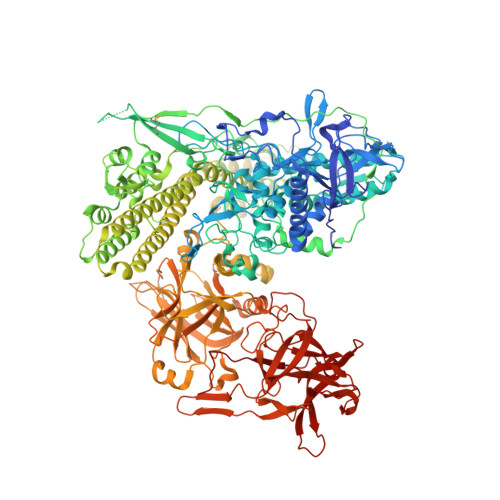The structure of the tetanus toxin reveals pH-mediated domain dynamics.
Masuyer, G., Conrad, J., Stenmark, P.(2017) EMBO Rep 18: 1306-1317
- PubMed: 28645943
- DOI: https://doi.org/10.15252/embr.201744198
- Primary Citation of Related Structures:
5N0B, 5N0C - PubMed Abstract:
The tetanus neurotoxin (TeNT) is a highly potent toxin produced by Clostridium tetani that inhibits neurotransmission of inhibitory interneurons, causing spastic paralysis in the tetanus disease. TeNT differs from the other clostridial neurotoxins by its unique ability to target the central nervous system by retrograde axonal transport. The crystal structure of the tetanus toxin reveals a "closed" domain arrangement stabilised by two disulphide bridges, and the molecular details of the toxin's interaction with its polysaccharide receptor. An integrative analysis combining X-ray crystallography, solution scattering and single particle electron cryo-microscopy reveals pH-mediated domain rearrangements that may give TeNT the ability to adapt to the multiple environments encountered during intoxication, and facilitate binding to distinct receptors.
Organizational Affiliation:
Department of Biochemistry and Biophysics, Stockholm University, Stockholm, Sweden.

















